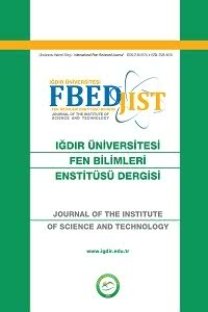Evaluation of Uses of Some Enzymes in Removal of Plant Impurities from Raw Wool Fabrics
Evaluation of Uses of Some Enzymes in Removal of Plant Impurities from Raw Wool Fabrics
• Cellulase, • Phytase • Pectinase, • Plant impurities, • Wool fabric,
___
- Bahtiyari, M. I. & Duran, K. (2013). A Study on the usability of ultrasound in scouring of raw wool. Journal of Cleaner Production, 41, 283–290.
- Barrett, A. J., Woessner, J. F., & Rawlings N. D. (Eds.). (2012). Handbook of Proteolytic Enzymes, (Vol. 1) Elsevier.
- Cavaco-Paulo, A., & Gubitz, G. (Eds.). (2003). Textile processing with enzymes (Vol. 29). Woodhead publishing.
- Chelikani, P., Fita, I., & Loewen, P. C. (2004). Diversity of structures and properties among catalases, Cellular and Molecular Life Sciences, 61 (2), 192–208.
- Choi, J. M., Han, S. S. & Kim, H. S. (2015). Industrial applications of enzyme biocatalysis:current status and future aspects. Biotechnology Advances, 33, 1443–1454.
- Choi, Y. M., Suh, H. J. & Kim, J. M. (2001). Purification and properties of extracellular phytase from Bacillus sp. KHU-10. Journal of Protein Chemistry, 20, 287–292.
- Das, T. & Ramaswamy, G. N. (2006). Enzyme treatment of wool and specialty hair fibers. Textile Research Journal, 76(2), 126–133.
- Demirkan, E., Sevgi, T., Akcakoca, D. & Ersoy, F. (2017). Partial purification, characterization and wheat bran degradation studies of a new phytase from the Bacillus megaterium EBD 9-1 strain. Turkish Journal of Biochemistry, 42, 329–337.
- El-Sayed, H., El-Gabry, L. K. & Kantouch F. (2010). Effect of bio-carbonization of coarse wool on its dyeability. Indian Journal of Fibre and Textile Research, 35, 330–36.
- Fersht, A. (2007), Enzyme structure and mechanism, San Francisco: Brenda, WH, The comprehensive enzyme information system, 50(2).
- Fong, W., Yeiser, A. & Lundgren, H. (1951). A new method for raw-wool scouring and grease recovery. Textile Research Journal, 21, 540–555.
- Garriga, M., Almaraz, M. & Marchiaro, A. (2017). Determination of reducing sugars in extracts of Undaria pinnatifida (harvey) algae by UV-visible spectrophotometry (DNS method). Actas de Ingeniería, 3, 173–179.
- Gouveia, I. C., Fiadeiro, J. M. & Queiroz, J. A. (2008). Combined bio-carbonization and dyeing of wool: a possibility using cell wall-degrading enzymes and 1:1 metal–complex dyes. Engineering in Life Sciences, 8, 250–259.
- Lowe, D. A. (2001). Production of Enzymes. In C. Ratledge & B. Kristionsen (Eds.), Basic Biotechnology (2 ed., pp. 679). Cambridge University Press.
- Miller, G. L. (1959). Use of dinitrosalicylic acid reagent for determination of reducing sugar. Analytical Chemistry, 31(3), 426–428.
- Mojsov, K. (2011, March 09-11) Application of enzymes in the textile industry: a review. II International Congress Engineering/Ecology and Materials in the Processing Industry, Jahorina, Bosnia and Hercegovina.
- Msanki S. (2020). Screening of cellulase enzyme production by Bacillus sp. isolated from Turkish soils, nutritional optimization, partial purification of enzyme, characterization and effectiveness of plant waste removal in wool fabric. Master Thesis. Bursa Uludag University, Institute of Science, Department of Biology, Bursa
- Rahman, M. & Nur, G. (2014). Feasible application of modern eco-friendly treatment of wool fabric before coloration. International Journal of Science Research Publication, 4(7), 1–7.
- Seager, S. L., Slabaugh, M. R. & Hansen, M. S. (2018). Chemistry for Today: General, Organic, and Biochemistry (9 ed., pp. 886). Cengage Learning.
- Sedelnik, N. (1993). BIOCARBO-Method of removal of plant impurities from the carded woollen textiles. Textile Overview, 12, 294–97.
- Sedelnik, N. (2003), Biotechnology to improve the quality of wool. Research Journal of Textile and Apparel, 7(2), 1–10.
- Sharma, N., Angural, S., Rana, M., Puri, N., Kondepudi, K. K. & Gupta, N. (2020). Phytase producing lactic acid bacteria: Cell factories for enhancing micronutrient bioavailability of phytate rich foods, Trends in Food Science & Technology, 96(2020), 1–12.
- Sun, D. & Stylios, G. K. (2004). Effect of low temperature plasma treatment on the scouring and dyeing of natural fibers. Textile Research Journal, 74(9), 751–756.
- Zheng, L., Du, B. & Wang L. (2012). Bio-scouring process optimization of wool fiber and wastewater utilization. The Journal of Textile Institute, 103(2), 159–165.
- ISSN: 2146-0574
- Yayın Aralığı: 4
- Başlangıç: 2011
- Yayıncı: -
Iğdır İlinde Güneş Enerjisi Uygulamaları için Optimum Panel Eğim Açısının Belirlenmesi
Akım Gözlem İstasyonlarında ANFIS Yöntemi ile Günlük Ortalama Debi Tahmini: Kızılırmak Örneği
Hilal Nur DEMİR, Mehmet Seren KORKMAZ, Sema ARIMAN
Berk Can YILDIZ, Emir Furkan DEMİR, Fatih HANCI
Resul ADANAŞ, Vedat TÜRKOĞLU, Zehra BAŞ
Istranca (Yıldız) Dağları, Kırklareli / Dereköy Bölgesinde Ornitolojik Gözlemler
Gözde Hafize YILDIRIM, Nuri YILMAZ
Fabrication of Highly Efficient Fe3O4/SSIP/GO Composite Films for Removal of Methylene Blue Dye
